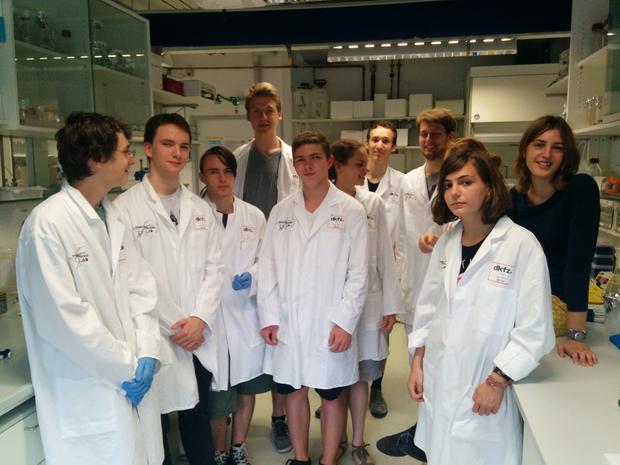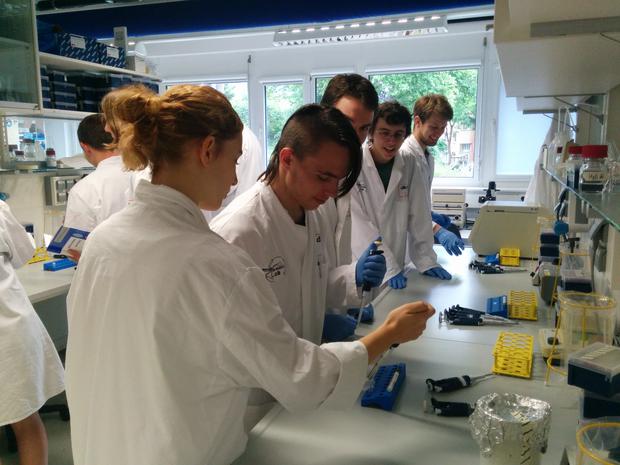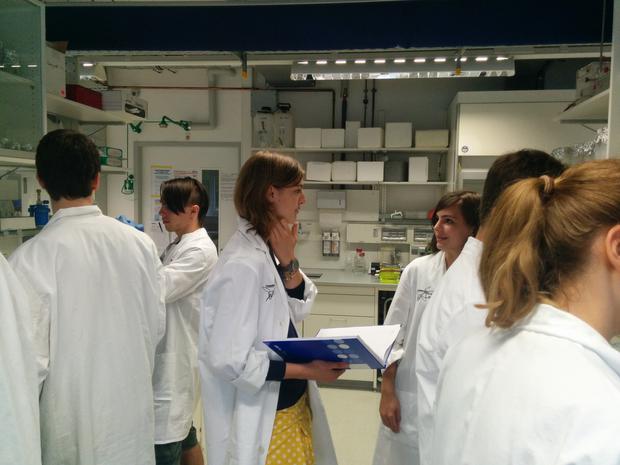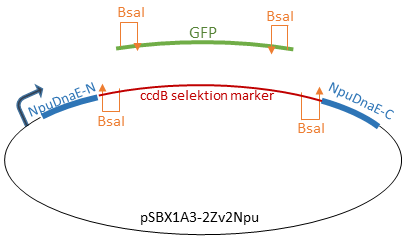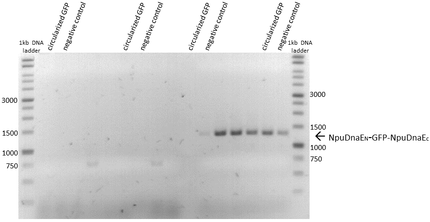Team:Heidelberg/Human Practice/Education
From 2014.igem.org
Shaping the next generation of scientists
Science is a process of lifelong learning, driven by curiosity about nature, our surrounding and all the processes out there that are still not understood. Progress in science impacts the daily life of everyone: new scientific discoveries become realized as new technologies to solve serious problems, such as environmental and health issues, but also to improve human life in general.
What mustn't be forgotten is that not only does science expand the borders of the human knowledge and provide humankind with new possibilities, but also has to be brought to other's attention. It is vital that scientific knowledge doesn't stay in the labs and academic journals, but reaches out to society. In addition, scientists need feedback from others, for example to reflect the impact their scientific work has on moral values of others. Especially new fields of research, such as nanotechnology and genetic engineering have often been met with doubts and fear. Education is essential to provide the necessary information on new scientific developments to allow every individual to evaluate them on a rational basis and by itself.
Synthetic biology, the intersection of biology and engineering, is another recent scientific area, which is seen critical by some people. We think, that many of the fears in the style of Frankenstein scenarios emerge as people lack the idea of what is actually happening in the lab. We see the duty to change this situation. Our idea as an iGEM team was to provide young minds with theoretical and practical skills to give them some first-hand experience in lab work and the daily life of scientists.
At school, this is very often not the case. One cannot know from reading a school book what lab work actually looks like. Luckily, there has already been made some effort to change this: The Life-Science Lab Heidelberg is a school laboratory established by the German Cancer Research Center that wants to fascinate high-school students for science, especially in the field of life-science. Different projects are realized there, such as lectures on friday evenings, science clubs and seminars.
Within the Life-Science Lab Heidelberg, we offered a three day lab course on synthetic biology for students between 15 and 18 years from high schools in the area of Heidelberg. During this lab course, the students were given the opportunity to repeat the circularization of GFP, an experiment we had previously conducted in the lab (Link to experiment). Additional to the practical background, we prepared seminars to provide the students with the the basic biological concepts of our experiments, as well as the methods they were using and the background of iGEM. We were impressed by the curiosity and fascination the students spread. Maybe we even met some future participants of the iGEM competition. Here you can find the lab course protocol we prepared for the students. It contains all assays as well as descriptions and explanations of molecular biological methods. As we prepared it for high-school students, it is written in German language.
Practical lab work
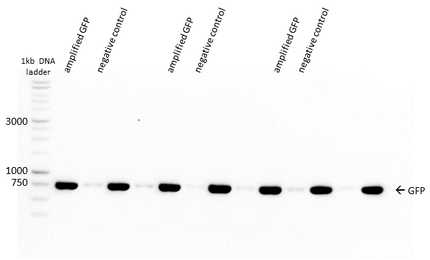
Agarose gel that shows the amplification of GFP with BsaI overhangs that are subsequently needed for Golden Gate cloning. Also a negative control was used in the PCR reaction, which only consisted of water instead of template DANN. GFP should result in a band of ~750 bp.
On day 1, the students performed a PCR using provided BsaI overhang containing Primers and a GFP plasmid – template. The PCR product was visualised on an agarose gel, purified and its concentration determined using a spectroscopic measurement technique. The purified construct was used for golden gate cloning using our toolbox construct for circularization (figure 1 and 2).
The resulting plasmid, as well as positive control, a linear GFP, and a negative control, water, were transformed in BL21(DE3).
On the next day, the overnight cultures were used to inoculate a new culture to express the linear and circularized GFP. Additionally a sample was taken to do a colony PCR, to verify the successful transformation (figure 3). The cultures were induced with 1 mM IPTG for one hour, as soon as the cultures reached an OD of 0.8. To verify a successful circularisation, the students conducted a Western Blot. If our construct leads to the circularization of GFP a shift should be visible on the Western Blot between linear and circular protein. The circular construct runs faster on a gel, since its coiled nature experiences less resistance from the gel matrix. Unfortunately no distinguishable band was visible on the Western Blot.
Unfortunately, the students experienced some difficulties in the experiments, which were probably based on a lack of experience and mixing up samples. Especially the Western Blot turned out to be difficult for the pupils. Even though the results did not look like expected, the students learned a lot about synthetic biology and molecular biology in general. Altogether it was great fun, for the students as well as for us, as supervisors and tutors.
 "
"
